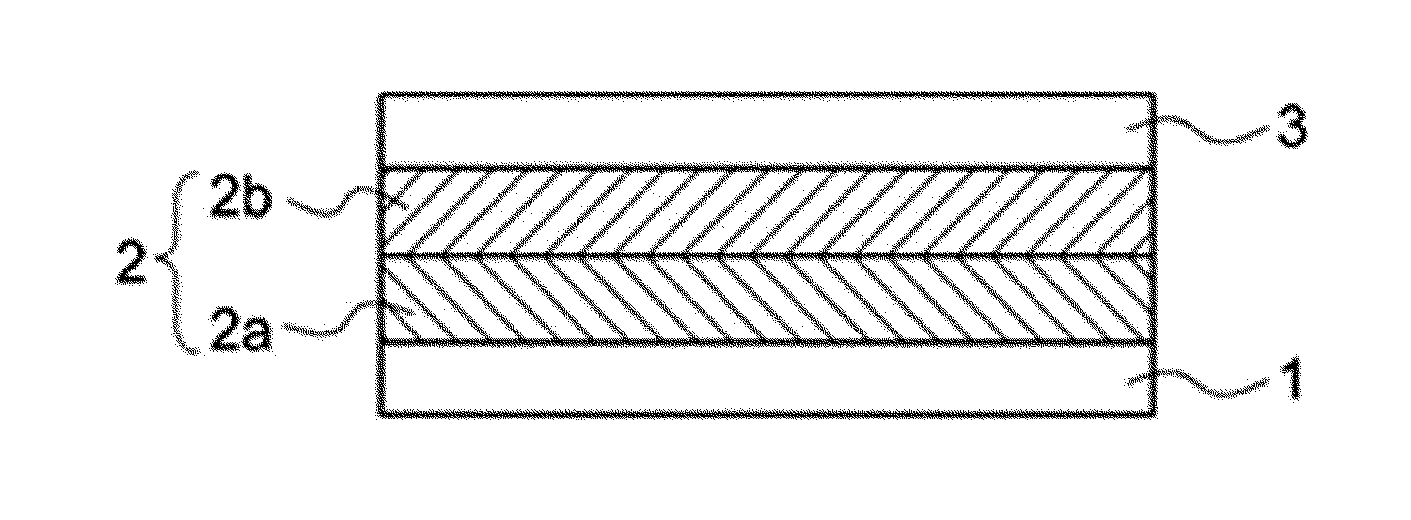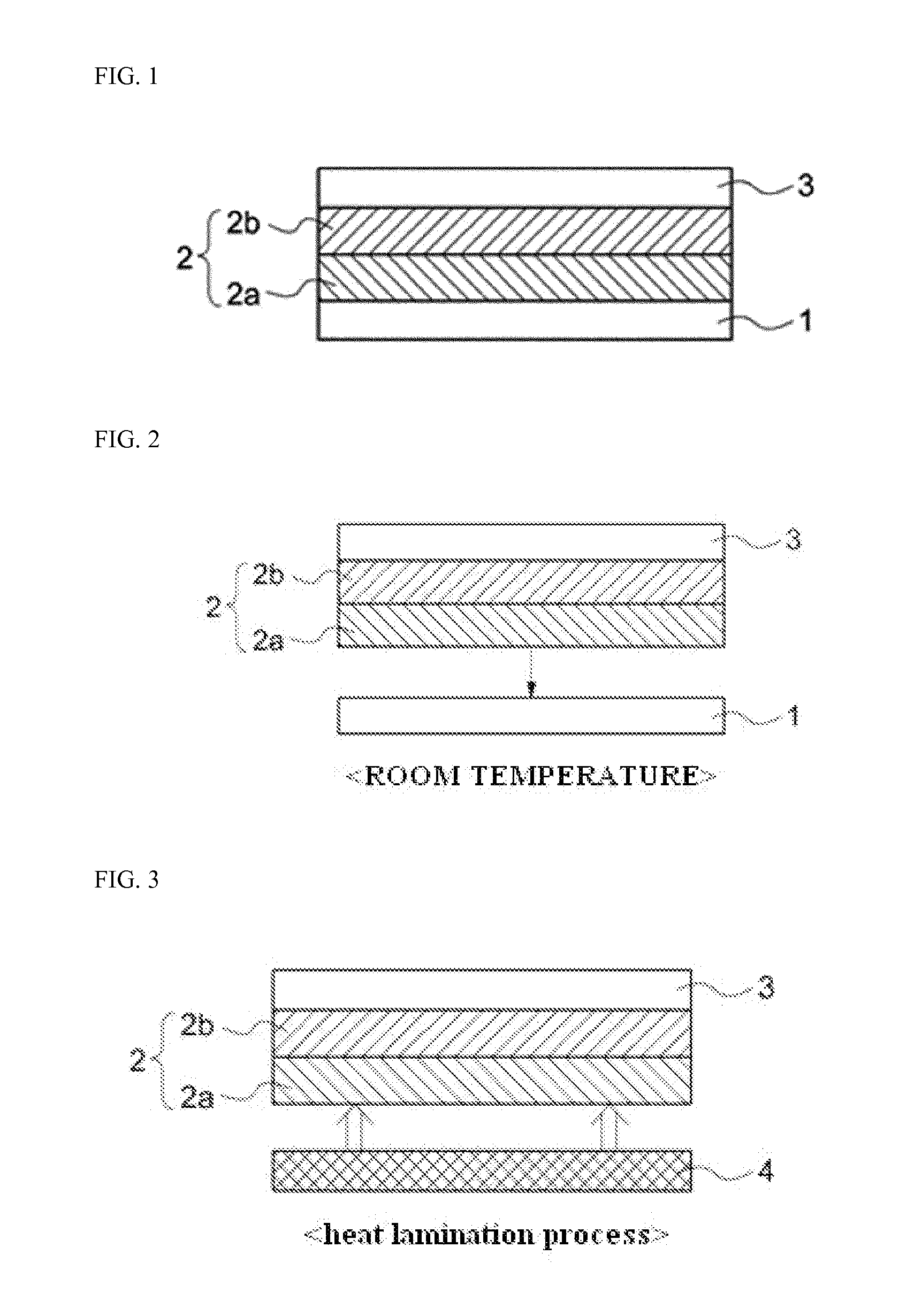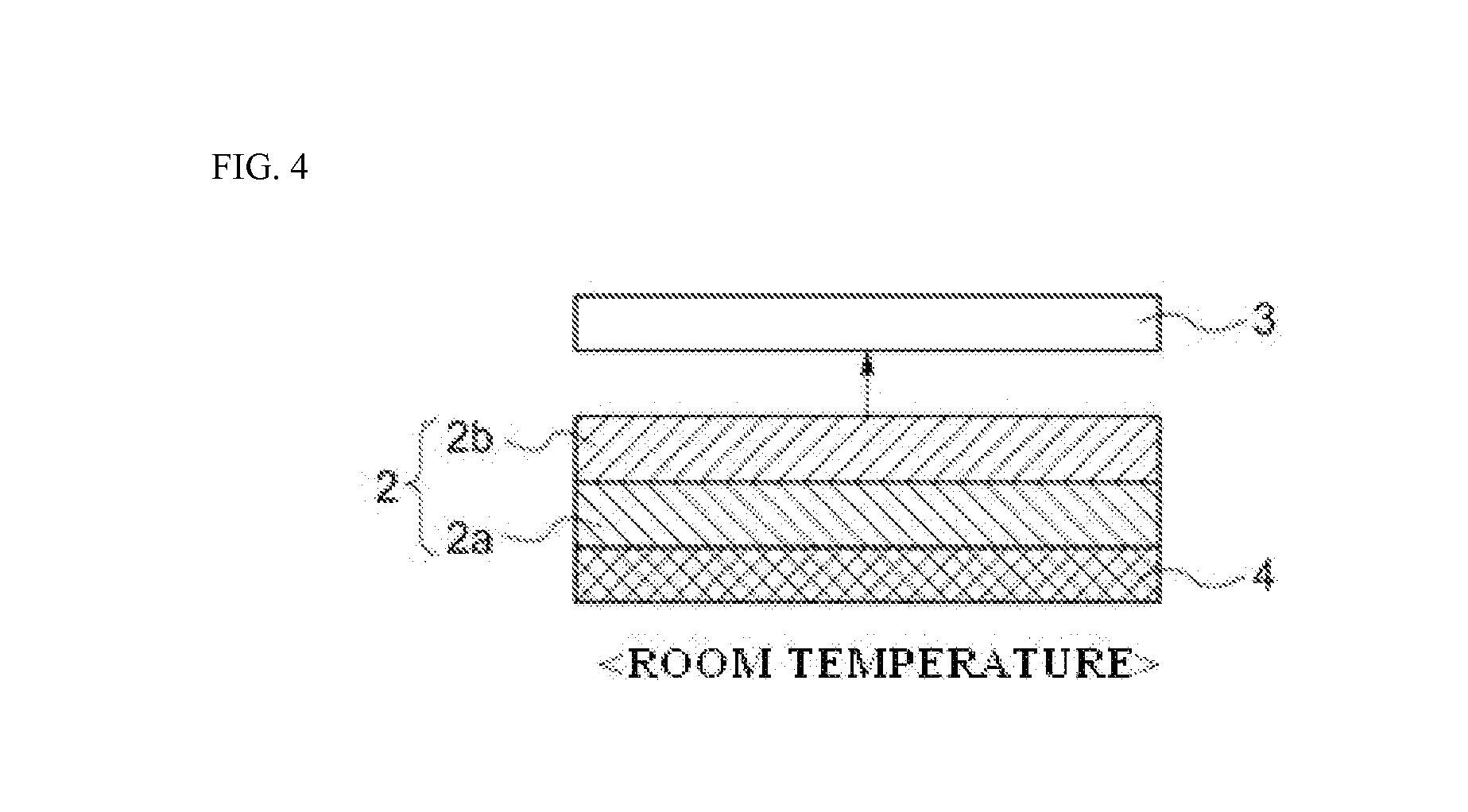Adhesive film and method for encapsulating organic electronic device using same
a technology of adhesive film and organic electronic device, which is applied in the direction of heat-activated film/foil adhesive, film/foil adhesive without carrier, application, etc., can solve the problems of poor adhesion and release properties, product including an oled may be very sensitive to environmental conditions, and the durability of oleds is not good, so as to prevent the effect of process defects
- Summary
- Abstract
- Description
- Claims
- Application Information
AI Technical Summary
Benefits of technology
Problems solved by technology
Method used
Image
Examples
example 1
[0084]1. Preparation of First Adhesive Layer Solution
[0085]As a moisture adsorbent solution, CaO (Sigma-Aldrich Co. LLC.) was added into methyl ethyl ketone at a concentration of 30 wt % to prepare a moisture adsorbent solution, and then the solution was milled for 24 hours in a ball mill process.
[0086]60 parts by weight of BPA-type liquid YD-128 (Kukdo Chemical Co. Ltd.) as an epoxy resin, 0.1 parts by weight of KBM-403 (Shin-Etsu Chemical Co. Ltd.) as a surface additive, and 40 parts by weight of YP-70 (Kukdo Chemical Co., Ltd.) as a high molecular weight resin having a softening point of 40° C. or more were added to prepare a homogenized solution. 6 parts by weight of 2PZ-CNS (Shikoku Chemicals Corp.) was added as a curing agent to the homogenized solution.
[0087]5 parts by weight with respect to the resin of the milling solution was added to the homogenized solution, and methyl ethyl ketone was added until the total solid content was about 50%, followed by high-speed stirring for...
example 2
[0096]A multilayered adhesive film was prepared using the same method as described in Example 1, except that the weight ratios of the surface additives in the first adhesive layer and the second adhesive layer are different from those in the process of preparing the adhesive film of Example 1. That is, in Example 2, the content of the surface additive in the first adhesive layer increased to 0.2 parts by weight, and the content of the surface additive in the second adhesive layer increased to 0.5 parts by weight.
example 3
[0097]A multilayered adhesive film was prepared using the same method as described in Example 1, except that the weight ratios of the epoxy resin in the first adhesive layer and the second adhesive layer are different from those in the process of preparing the adhesive film of Example 1. That is, in Example 3, the content ratio of a liquid epoxy and a high molecular weight resin in the first adhesive layer was changed to 65:35, and the content ratio of the liquid epoxy and the high molecular weight resin in the second adhesive layer was changed to 62:38.
PUM
| Property | Measurement | Unit |
|---|---|---|
| adhesive | aaaaa | aaaaa |
| peeling strength | aaaaa | aaaaa |
| molecular weight | aaaaa | aaaaa |
Abstract
Description
Claims
Application Information
 Login to View More
Login to View More - R&D
- Intellectual Property
- Life Sciences
- Materials
- Tech Scout
- Unparalleled Data Quality
- Higher Quality Content
- 60% Fewer Hallucinations
Browse by: Latest US Patents, China's latest patents, Technical Efficacy Thesaurus, Application Domain, Technology Topic, Popular Technical Reports.
© 2025 PatSnap. All rights reserved.Legal|Privacy policy|Modern Slavery Act Transparency Statement|Sitemap|About US| Contact US: help@patsnap.com



